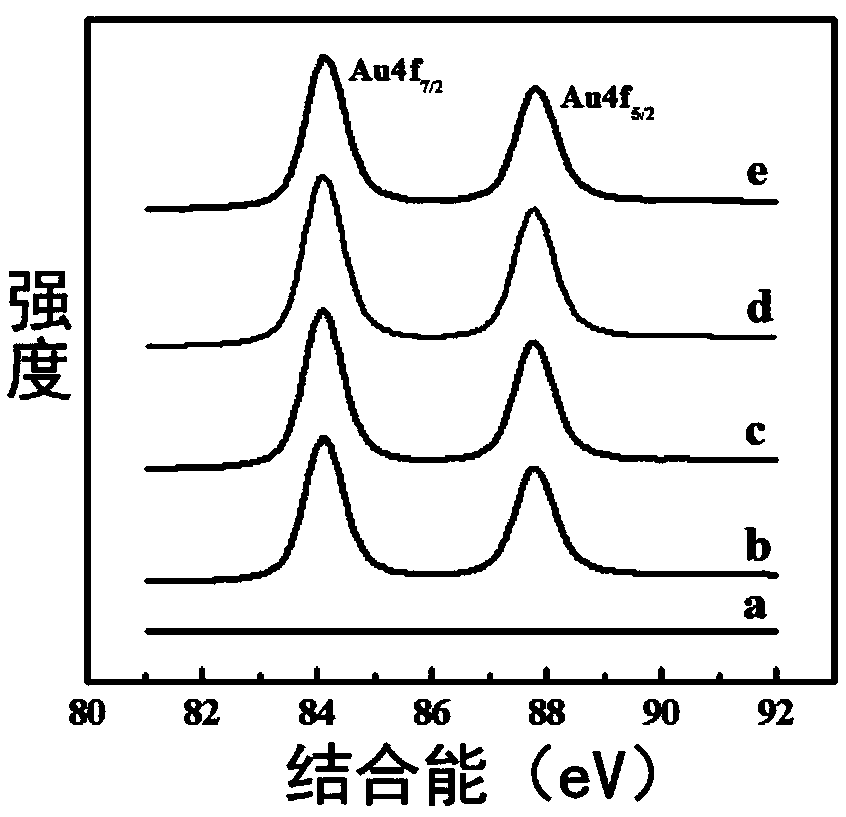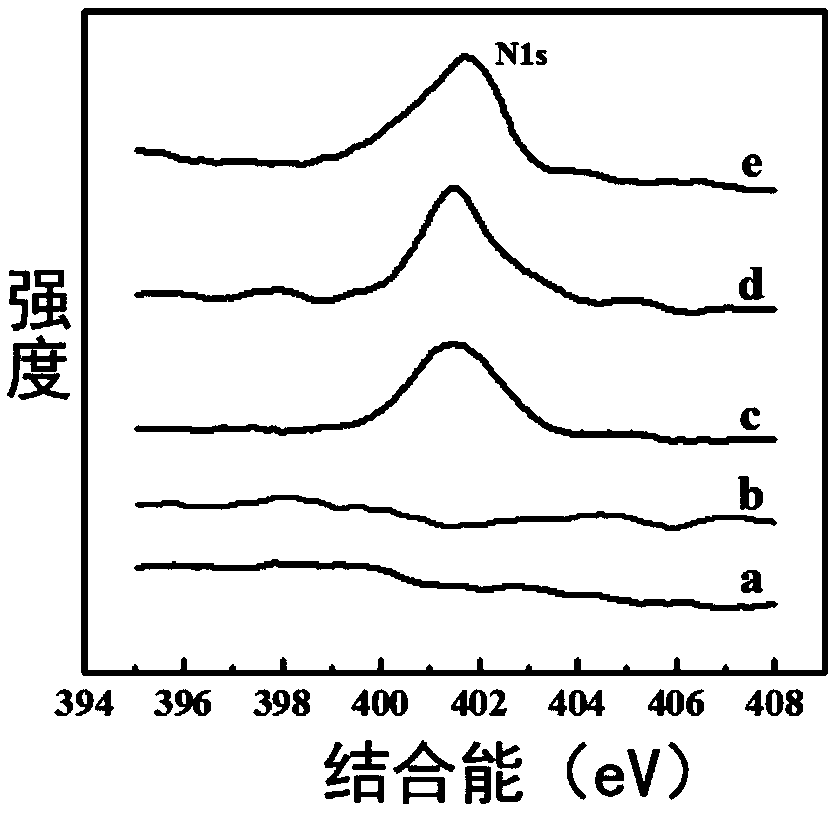Dopamine detection device, detection electrode and preparation method as well as electrochemical sensor
A detection method and detection electrode technology are applied in the field of dopamine detection electrochemical sensors and dopamine detection, which can solve the problems of large sample capacity, interference, and the sensor cannot achieve sensitive detection, and achieve the important reality of reducing capacity, improving selectivity, and Significance and effect of application prospects
- Summary
- Abstract
- Description
- Claims
- Application Information
AI Technical Summary
Problems solved by technology
Method used
Image
Examples
Embodiment 1
[0090] A method for detecting dopamine based on bimolecular recognition, the method for detecting dopamine is as follows: (N-hydroxysuccinimide ester) is used to recognize the fatty primary amine group on the dopamine, and the boronic acid group is used to recognize the o-diphenolic hydroxyl group on the dopamine, Then, the reversible electrochemical behavior of the substance containing the boric acid group is used to detect the electrochemical signal of the substance containing the boric acid group, thereby detecting the concentration or content of the dopamine.
Embodiment 2
[0092] Example 1 was repeated except that the (N-hydroxysuccinimide ester) was derived from 3,3'-dithiodipropionic acid bis(N-hydroxysuccinimide ester). The boronic acid group is derived from ferroceneboronic acid.
Embodiment 3
[0094] Example 2 was repeated, except that the boronic acid group was derived from 1,1-diboronic acid ferrocene.
PUM
 Login to View More
Login to View More Abstract
Description
Claims
Application Information
 Login to View More
Login to View More - R&D
- Intellectual Property
- Life Sciences
- Materials
- Tech Scout
- Unparalleled Data Quality
- Higher Quality Content
- 60% Fewer Hallucinations
Browse by: Latest US Patents, China's latest patents, Technical Efficacy Thesaurus, Application Domain, Technology Topic, Popular Technical Reports.
© 2025 PatSnap. All rights reserved.Legal|Privacy policy|Modern Slavery Act Transparency Statement|Sitemap|About US| Contact US: help@patsnap.com



